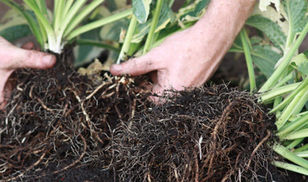 By now you may have forgotten about the blooms that graced your garden this past spring (those beautiful tulips, daffodils, iris). But, now that we’re nearing the end of summer and those plants are dormant, it’s becoming a perfect time for dividing or transplanting. You may want to transplant flowers because they have flourished to the point of overcrowding, or simply to add flowers to another area of your property (or a friend’s!) once they’re established. If your spring flowers have outgrown their space, transplanting them now – late-summer to mid-fall – gives them time to adjust to their new environment prior to the cold weather. But note, while this is the time to transplant spring flowers, it’s not yet ideal to move any summer blooms! By moving the bulbs during their dormant period, you avoid disturbing their natural growing process. If you want to divide or transplant summer flowers, wait until late-fall after their foliage dies away or even early-spring next year. Digging up the plant will result in some root loss, so you'll want to reduce stress on the plant as much as possible. When transplanting, choose a day that's overcast or even rainy which minimizes stress caused by heat and extremely sunny conditions. You may also want to remove most of the foliage so there will be less of a demand on the roots to supply water to the plant. You can divide a perennial and leave part of it growing where it is, moving a piece of it to another location. Or, if the size of the mature plant has completely outgrown its space, you can remove the entire plant from the root, divide it and place both divisions somewhere else where they can thrive. Once you re-plant the perennial, apply three to four inches of mulch around its base and water it thoroughly. Check on the plant every few days; if the top few inches of soil are dry, water again, being careful not to overwater.
1 Comment
|
Archives
February 2024
AuthorRodrigo Dos Anjos Categories
All
|
Gardenin' Angels, Landscape Management & Construction
A preferred landscaper, serving Southeastern Massachusetts
11 Renker Drive, Easton, MA 02375
774-284-1171
[email protected]
Privacy Policy • Terms of Use

 RSS Feed
RSS Feed